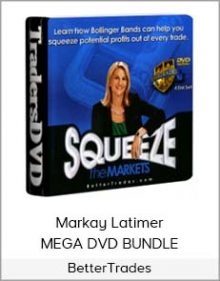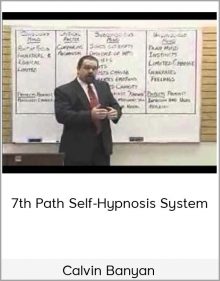James Scott Bell – How to Write Best-Selling Fiction
Original price was: $235.00.$52.00Current price is: $52.00.
A best-selling author himself, winner of the International Thriller Writers Award and the Christy Award for Suspense, plus the author of the number-one best seller for writers, Mr. Bell has been teaching the principles of best-selling fiction for over 20 years, principles that apply to any genre or style.
- Description
- Reviews (0)
- More Products
Description
James Scott Bell – How to Write Best-Selling Fiction

Page: https://www.thegreatcourses.com/courses/how-to-write-best-selling-fiction
Check it out: James Scott Bell – How to Write Best-Selling Fiction
When it comes to solving the mystery of what makes a best-selling novel, no one has cracked the code better than James Scott Bell.
A best-selling author himself, winner of the International Thriller Writers Award and the Christy Award for Suspense, plus the author of the number-one best seller for writers, Mr. Bell has been teaching the principles of best-selling fiction for over 20 years, principles that apply to any genre or style.
In the 24 lectures of How to Write Best-Selling Fiction, Mr. Bell provides a comprehensive, eye-opening, and illuminating survey of the entire writing process, as well as a full breakdown of how dozens of best-selling authors have implemented these best practices in their own writing. Any aspiring author will gain a wealth of tools that that will not only improve their ability to write, but will also increase their enjoyment of the craft.
Great Expectations
Do you have a best seller in you? Mr. Bell believes you do. But tapping into your creativity isn’t always easy. When best-selling authors such as Stephen King, Michael Crichton, or Janet Evanovich deliver success after success, it can appear as if creating worlds where ghost-infested hotels drive people mad is something that some writers can just . do. We all have creativity in us, but sometimes we need help getting in touch with it. Mr. Bell gets you started by offering several fun, challenging, and mind-expanding exercises that help you flex and develop your creative muscle. Grab a pen and give these a try:
What-If Moments: We all have crazy what-if thoughts that cross our minds from time to time. Likely, most of us simply just laugh them off. Try making the most of what-if moments. The next time you wonder, “What if this plant I’m looking at suddenly started talking to me?”-roll with it. What would it say? Would you talk back or run away? There is a story here.
Weird Job Situations: Giving people insight into the daily life that only a few select people could provide can be a fascinating read. And putting your characters in jobs with tremendous tension helps keep your reader on edge. What does a day in the life of a bomb disposal technician look like? How does this person deal with facing death on a regular basis? Would she try to find love and start a family? There is a story here.
Hear the Headlines: But don’t go much further than the headlines. Work with just a limited amount of information and use your imagination to fill in the details. “Scientists Discover New Fish That Walks on Land.” What would that look like? Do you go fishing or hunting? There is a story here.
The First-Line Game. As Mr. Bell points out throughout the course, the first sentence of a novel is one of the most important. One good line can not only hook your reader into buying the book, it can hook you into a story you never imagined. Experiment with fun, funny, weird, cool, intriguing first lines and see where they take you. “Today I learned you should never travel to Jupiter without an extra pair of underpants.” Who is going to Jupiter? Why underpants? Wait, WHAT? There is a story here.
Don’t get caught up in the realities of our world, the illogic of your ideas, or the fear that someone might laugh. Audiences are eager to suspend their disbelief for a world that captures their imagination. It’s just like Field of Dreams claimed: “If you build it, they will come.” Remember, at some point, Michael Crichton wondered, “What if a mosquito that was stuck in a rock resulted in an amusement park full of real-life dinosaurs? There is a story here.”
LOCK and Key
So, now you’ve got an idea-or a couple dozen. What next?
Mr. Bell demonstrates how famous writers such as Harper Lee, Michael Connelly, Jim Butcher, Margaret Mitchell, David Baldacci, John Grisham, Suzanne Collins, and dozens more apply time-tested best practices to their writing. But even more valuable, he reveals his own secrets and methods for developing page-turning books that readers can’t get enough of.
His helpful LOCK system provides the structure you need to create an engaging story:
L – Lead: Your protagonist can be:
positive-the hero, someone who embodies moral codes of a community, someone who readers root for;
negative-does not adhere to the moral code, we root for them to change or to get their just desserts; or an
anti-hero-has own morals, usually dragged into a community kicking and screaming. You want to bond your reader to your lead by putting them in a terrible situation, a hardship, or inner conflict to evoke sympathy or empathy.
O – Objective: Your lead has a mission: to get something or get away from something.
C – Confrontation: Ramp up engagement by pitting opposition and/or outside forces against the lead accomplishing his or her objective.
K – Knockout: Give your reader a satisfying conclusion that resonates. There are five fundamental endings to best sellers. You will probably recognize them from movies and television shows as well:
Lead wins, gains objective;
Lead loses, missing objective;
Lead loses objective, gains something else of value;
Lead wins objective, loses something of value; or
Open/ambiguous ending.
Once you’ve locked in your LOCK, you have the start of a best seller.
The Sense of an Ending
How to Write Best-Selling Fiction is jam-packed with techniques to help bring power to your plot, charisma to your characters, drama to your dialogue, and vitality to your voice. Even for the “pantster” writers-those who reject the planning and plotting approach to writing a book-this course is chock-full of tips for charts, exercises, shortcuts, diagrams, and grids that help you to organize your story, keep your characters unique, and ensure you meet all the fundamental points that a best-selling novel requires. You will walk away with a toolkit of methods to create stories that feel realistic and that resonate with your readers. And no matter what type of writer you are, these insights will take your writing to the next level, with concepts you may not have considered.
For example: the last chapter. Many writers get to that pivotal point and just breathe a sigh of relief as they try to tie up all the loose ends. But as you round the corner of bringing all the pieces together in your ending chapter, Mr. Bell underlines the importance of not underestimating the ending, making sure you have the “Knockout” of the LOCK system. As Mickey Spillane noted, “The first chapter sells the book. The last chapter sells the next book.” Mr. Bell has already provided you with masterful means to get your reader hooked with the first chapter-and potentially the very first line! And now, he reveals five strategies that will help you finish your book in a way that gets your reader craving your next title.
The Corrections
Ahhh, the revising and editing stage of your book. This process is where so many potential writers fall off the rails. Because there is no denying it: It’s hardto find fault in your baby. As Mr. Bell puts it, to be successful you must “write like you’re in love, edit like you’re in charge.”
Revisions are extremely important and take a lot of discipline. Mr. Bell introduces you to the two most important rules of writing and then his own corollary to those rules. Looking at the practices of famous writers such as Robert Crais, Lawrence Block, Dean Koontz, Ridley Pearson, and more, Mr. Bell offers a treasure trove of insights for this important stage.
He gives you suggestions for creating a revision schedule versus revising as you go, and tells you why it’s imperative that you take a cooling-off period before you take a first pass. Discover tricks for helping you to re-read your own work with fresh eyes. Learn shortcuts for marking places you need to come back to so you can read your book straight through. Mr. Bell provides you a valuable list of questions to ask yourself as you read, a list of reminders to check off as you read, and tricks to ensure you are not overusing words or terms. If you consider using outside readers, he also offers a list of questions and points that you can ask them to be aware of so you receive constructive feedback-because your mom will always love your book. He also gives you advice regarding the use of a professional editor. Finally, he offers a wealth of tips about polishing your second draft.
Educated
Once your book is done, Mr. Bell doesn’t just leave you on a cliffhanger. He gives you a final series of lectures that cover the pros and cons of using an agent; a breakdown of the query, synopsis, and sample chapter; the benefits and pitfalls of self-publishing; and more. After the 24 lectures of How to Write Best-Selling Fiction, you’ll feel empowered to take your finished novel in whichever direction you feel most comfortable with, whether it’s using an agent or self-publishing.
The famous writer Somerset Maugham once said, “There are three rules for writing a novel. Unfortunately, no one knows what they are.” And maybe no one knows the “rules,” but there are writing techniques, practices, and fundamentals that writers have used for decades to become best-selling authors. And as Picasso proved, once you master those fundamentals, you can then create your own rules. With How to Write Best-Selling Fiction, you get an intimate introduction to the fundamentals of how to write your best seller, from a best-selling author who has mastered the secrets to success.
Be the first to review “James Scott Bell – How to Write Best-Selling Fiction”
You must be logged in to post a review.
-
Philip Anglade – OmniGroup’s Premium Membership – Advanced FxProNow Course v1.4 – Session 1, 2 & 3
Original price was: $997.00.$197.00Current price is: $197.00. Buy now -
LGBTQ Youth Clinical Strategies to Support Sexual Orientation and Gender Identity
Original price was: $220.00.$52.00Current price is: $52.00. Buy now -
Matthew Hussey – Dating Advice Programs
Original price was: $899.00.$127.00Current price is: $127.00. Buy now -
Markay Latimer MEGA DVD BUNDLE From BetterTrades – 30 DVD Set
Original price was: $199.00.$62.00Current price is: $62.00. Buy now -
Brianna Battles – 8 Week Postpartum Athlete Training Program (NEW)
Original price was: $99.00.$37.00Current price is: $37.00. Buy now -
Dan Dasilva – Influencer Marketing Academy
Original price was: $797.00.$107.00Current price is: $107.00. Buy now

























Reviews
There are no reviews yet.